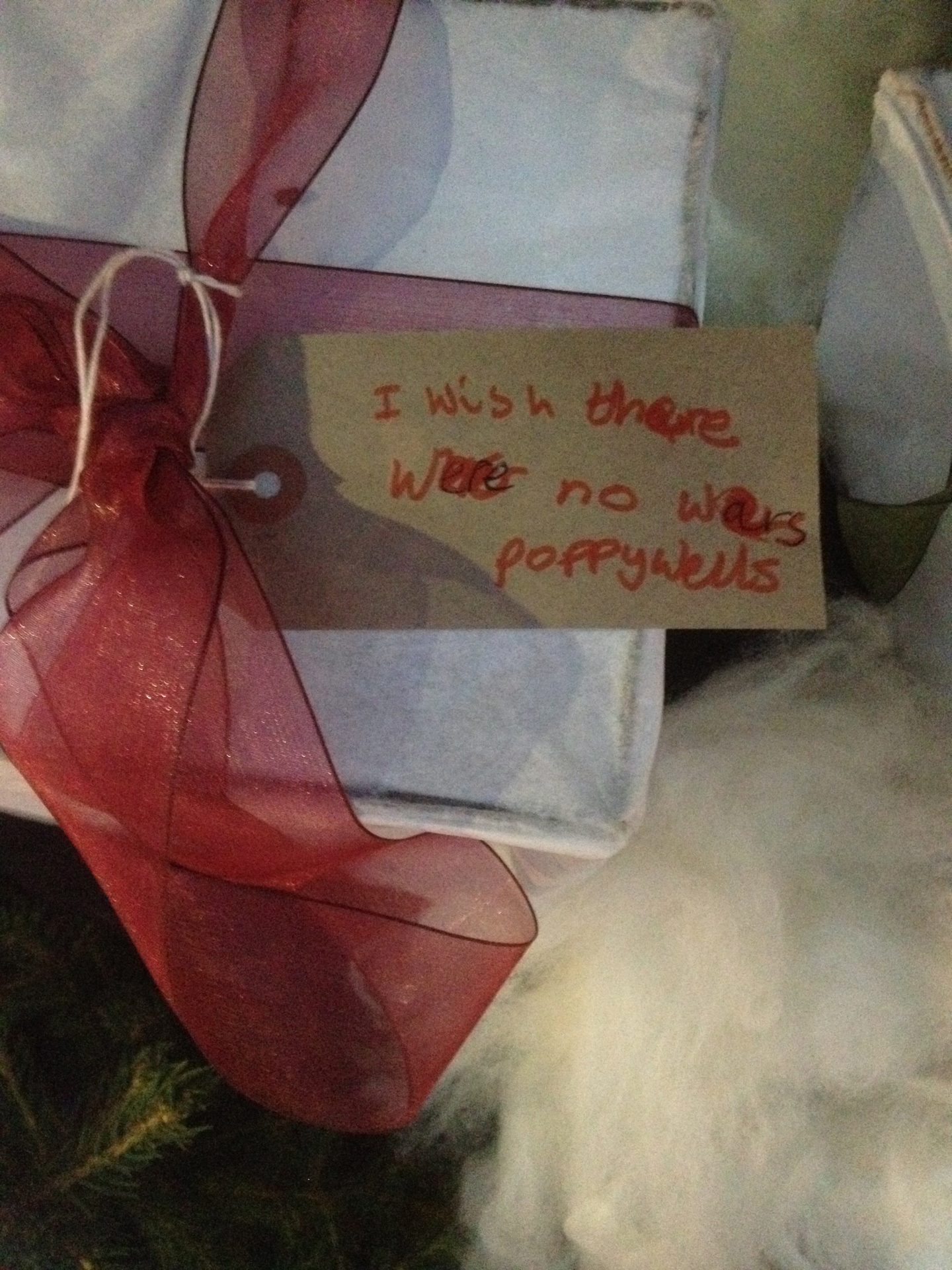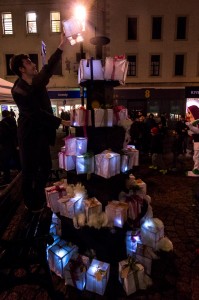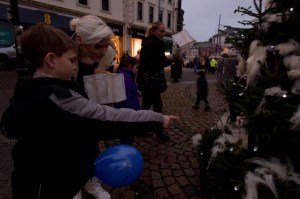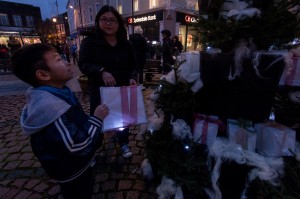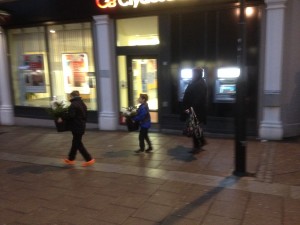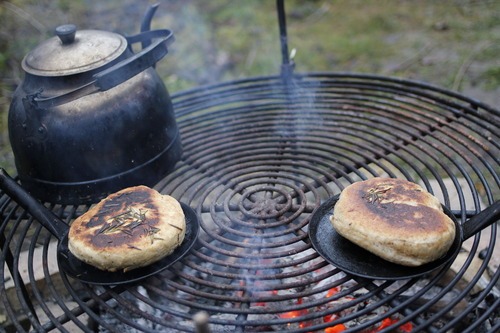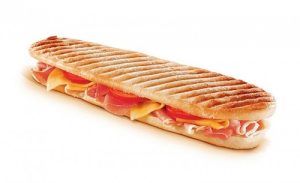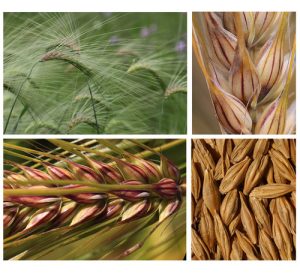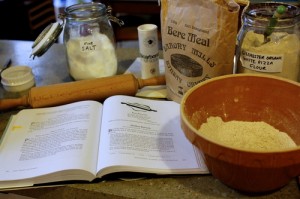Last November as part of the Dumfries Christmas Light’s Switch On, members of the Young Stove took on their first project, creating an interactive artwork on the High Street. Developing ideas for a less commercial, more natural Christmas, the group decided to gift live Christmas trees to those attending the Switch On in exchange for a Christmas wish of goodwill.
Report on the Young Stove Christmas Lights project by Young Stove member Michael Moore
Originally two worries I had about the project was “Would we have enough time for the event to be a big hit?” and “Would the public really get a feeling of the non-materialist Christmas?” I was happy to find I’d been worrying for no reason as within an hour and fifty minutes all the trees had been “re-homed” and the Glowing Gifts with their attached wishes were all sat ornately on and all around the stand.
Far from people simply saying something and getting a tree I found that the majority of people involved were both really interested in understanding how to get their tree to flourish and even struggled to choose of a thoughtful wish/hope. People really thinking about what they would give if they could was brilliant to see.
The only thing I was more impressed with than the public interest was my fellow Young Stove members. They were straight into interaction with the public from the get go and never showed a second of stress even when the public crowd gathered around our stand waiting keenly to see what the event was about. All of the members went into a fantastic operational mode where no “ordering” was needed. We all interacted with each other as equals and there could be no question of a lack of respect for anyone present that’s not just supposedly rare with young people, but also rare with people generally!
I’m impressed and happy to see all the work that was put into the project become a success but I’m happier still to be part of a group of creative and ambitious people working in a naturally co-operative autonomous way. It’s really great to see individual artists collaborating happily to create an event in bringing the community together even on a cold dark winters day.
I’m excited to see what we think of next and I’m (almost) hoping it’s nothing too easy to make happen as it seems its sometimes better to be overambitious!
To see the full set of photos from the event head to our Flickr page here

